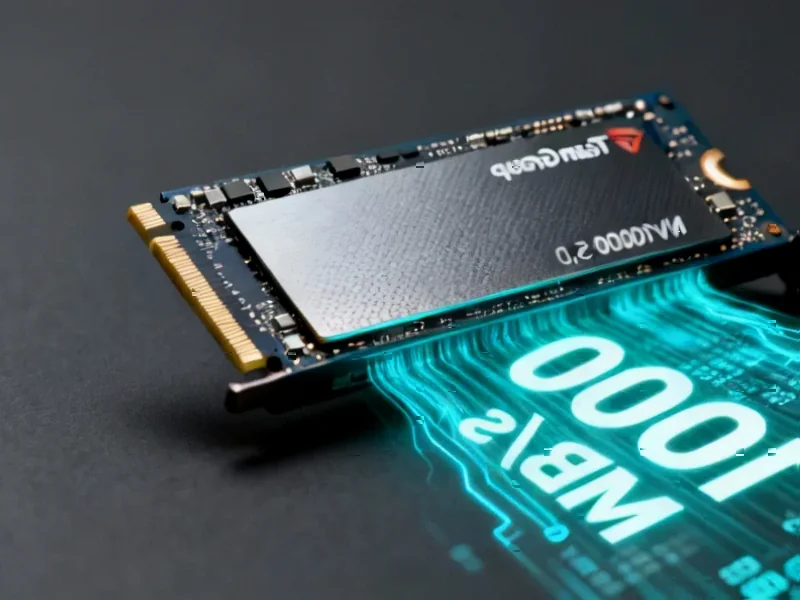According to PCWorld, Corsair has launched its new flagship MP700 Pro XT PCIe 5.0 SSD with staggering sequential speeds of 14,900 MB/s write and 14,500 MB/s read. These speeds represent an almost 50 percent improvement over Corsair’s existing MP700 Elite series and would significantly outperform the current market leader, TeamGroup’s Z450 drive. The drives are available immediately in 1TB and 2TB capacities priced at $160 and $250 respectively, though they’re currently limited to 2280 format (80mm) and ship without integrated heatsinks. PCWorld notes that while Corsair has historically delivered on its performance claims under ideal conditions, independent verification of these latest benchmarks is still pending.
Table of Contents
The Cooling Conundrum
What PCWorld’s coverage doesn’t fully address is the thermal management challenge these speeds create. PCIe 5.0 technology essentially doubles the bandwidth of PCIe 4.0, but this comes with a significant power consumption penalty that manifests as heat. Without adequate cooling, these drives will thermal throttle almost immediately, rendering their impressive benchmark numbers meaningless in real-world usage. The fact that Corsair is shipping these without integrated heatsinks suggests they’re targeting enthusiasts who understand the necessity of third-party cooling solutions, but this creates a barrier for mainstream adoption.
Shifting Storage Economics
The pricing strategy here reveals Corsair’s positioning in the premium storage market. At $160 for 1TB and $250 for 2TB, they’re competing directly with established players like Samsung and Western Digital while offering substantially higher theoretical performance. However, the total cost of ownership must include the additional expense of high-performance cooling solutions, which can add $30-50 to the effective price. This creates an interesting dynamic where the raw drive cost appears competitive, but the complete solution cost places it firmly in enthusiast territory. As SSD technology continues to evolve, we’re seeing a clear bifurcation between mainstream storage and performance-focused solutions that require specialized infrastructure.
The 3D TLC Endurance Question
Corsair’s claim that their 3D TLC NAND offers an ideal balance of “performance, endurance, and value” deserves scrutiny. While the company’s announcement emphasizes efficiency through NVMe 2.0 implementation, high-performance TLC NAND typically sacrifices some endurance compared to more conservative MLC configurations. For gaming and content creation workloads that involve frequent large file transfers, the write endurance could become a limiting factor over time. The industry standard for measuring data rate performance often focuses on peak speeds rather than sustained performance under thermal constraints, which is where endurance really matters.
The M.2 Bottleneck
The limitation to 2280 M.2 format represents both a practical constraint and a strategic choice. While the 80mm length is the current industry standard for consumer motherboards, it restricts the physical space available for both NAND packages and cooling solutions. As performance continues to scale, we may see a shift toward larger form factors that can accommodate more sophisticated thermal management. Corsair’s decision to stick with the standard format suggests they’re prioritizing compatibility over pushing the absolute performance envelope, which makes sense given Corsair’s gaming-focused market position.
What Comes Next in Storage
The MP700 Pro XT represents an important milestone in the consumer storage evolution, but it also highlights the growing gap between theoretical performance and practical implementation. As we approach 15,000 MB/s speeds, we’re essentially saturating the capabilities of current motherboard designs and cooling solutions. The next breakthrough won’t be in raw speed alone, but in thermal efficiency and sustained performance. Companies that can deliver these speeds without requiring exotic cooling solutions will truly win the next generation storage battle. For now, Corsair’s achievement demonstrates the rapid pace of PCIe technology advancement, even if the practical benefits for most users remain limited to specific professional workloads.



